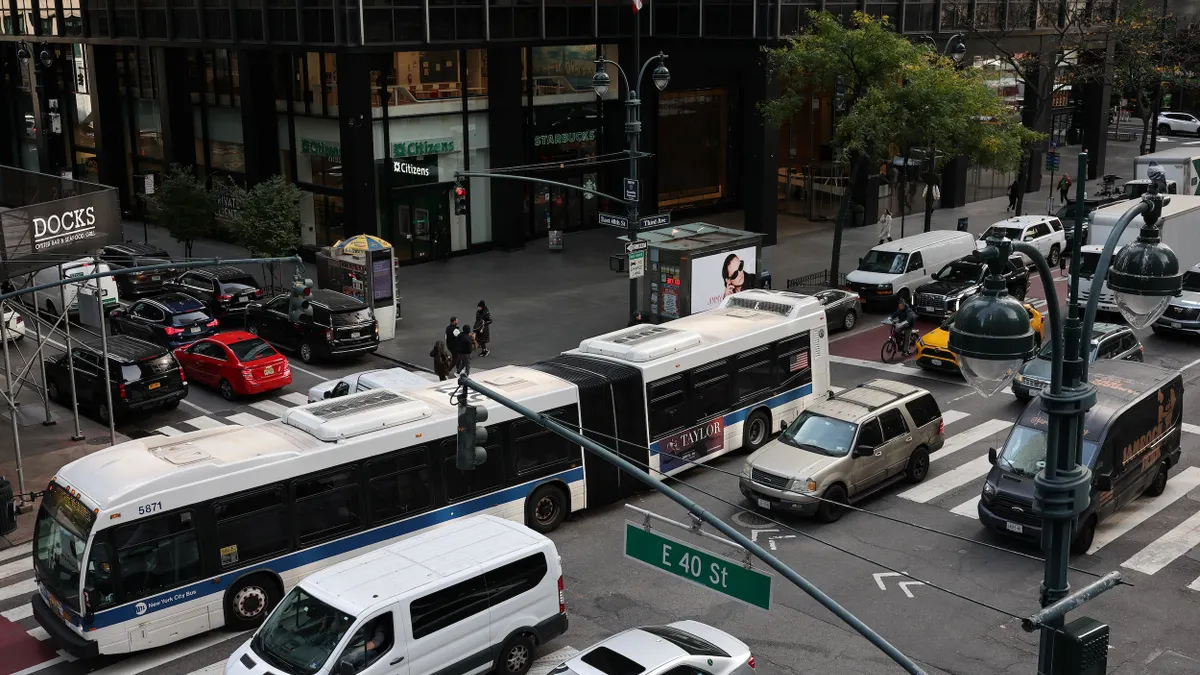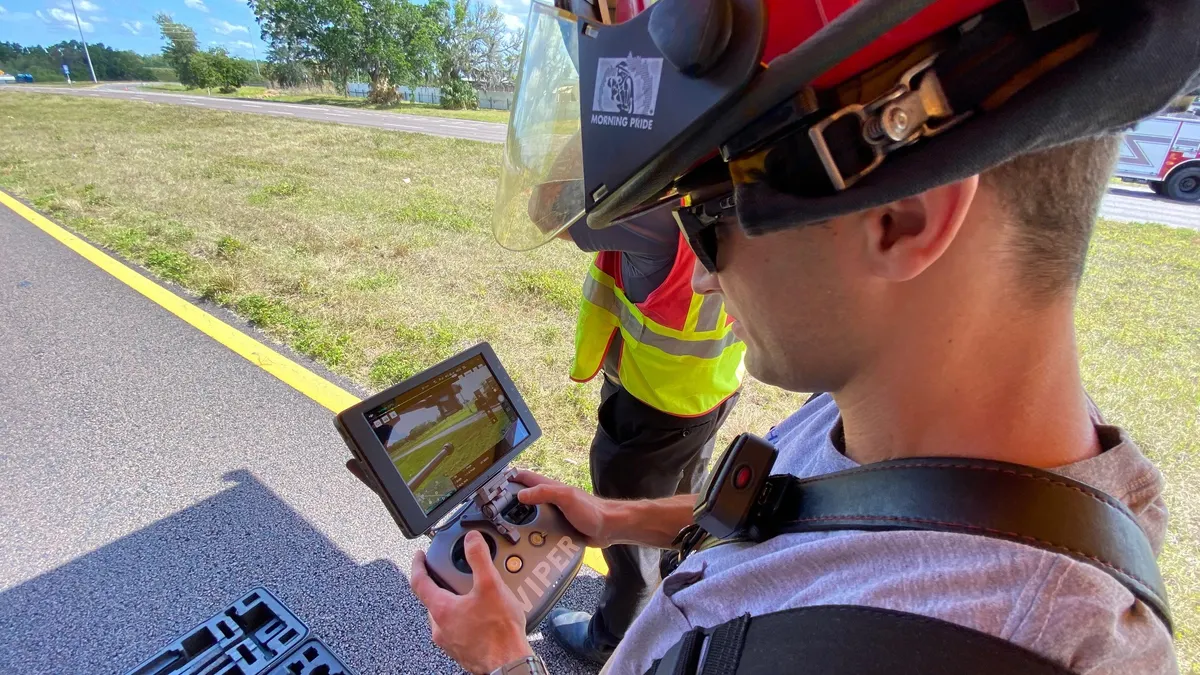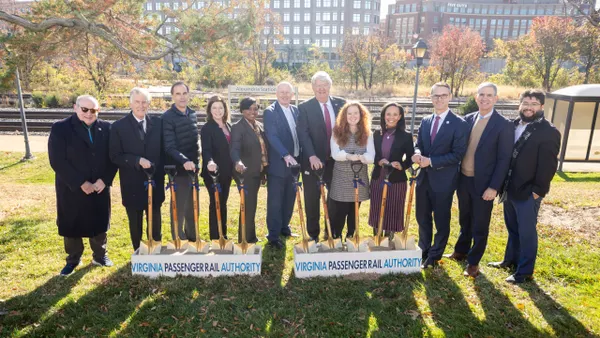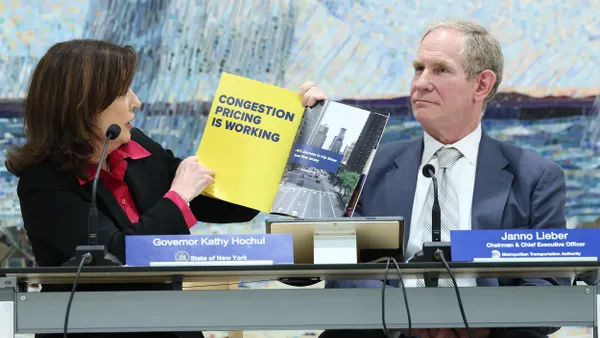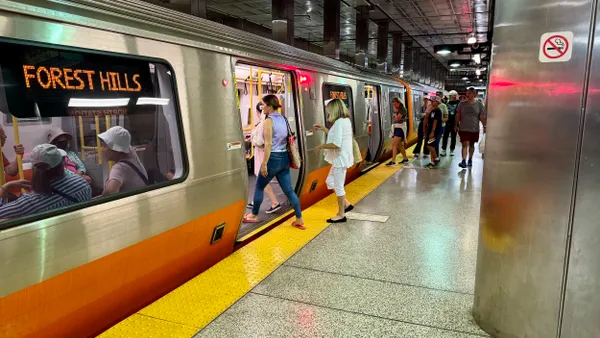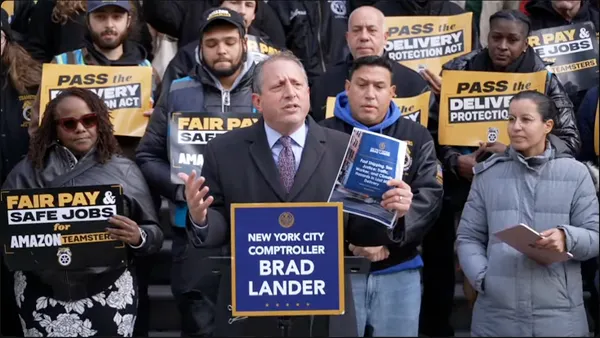Dive Brief:
- Ridership on U.S. public transit systems for the first four months of this year reached 85% of 2019 levels for the same period, according to data from the American Public Transportation Association released May 14.
- Transit ridership growth exceeded office occupancy, which APTA reported at 54% compared with 50% in late 2024.
- APTA found that smaller cities saw higher transit recovery rates than large cities and that bus ridership rebounded more strongly than rail ridership.
Dive Insight:
With the onset of the COVID-19 pandemic in early 2020, transit ridership in the U.S. plunged 40% as lockdowns and remote office work took hold. Recovery has been steady in recent years, returning to 66% by the end of 2022, 76% in December 2023, and ridership in 2024 at 79% of pre-pandemic levels.
“Ridership continues to rebound despite limited office attendance, proving public transportation serves far more than traditional commuters,” said APTA President and CEO Paul Skoutelas in a statement. “Our systems are vital lifelines, taking people to work, school, healthcare and special community events.”
Ridership growth tracked closely with job growth, especially with increased service industry jobs, the report says. Cities with populations under 100,000 grew ridership to 88% of pre-pandemic levels, and those with 100,000 to 500,000 populations rose to 82%. Smaller cities, with fewer remote workers, saw more return-to-office commutes.
APTA data shows that cities over 500,000 in population achieved 78% transit ridership recovery and those over 2 million reached 81%. New York City and Washington, D.C., both saw increased ridership in the first months of this year. APTA attributes return-to-office policies in the District and congestion pricing in New York City for these trends. Although the future of New York’s tolling program remains uncertain, early data showed bus, subway and commuter rail ridership up from 4% to 9% in January and February compared to the same period last year.
Nationally, bus ridership recovered to 86% of 2019 levels, more than all other fixed-route transit modes, APTA found. Bus riders, on average, earn less than rail riders, often have non-office jobs and are younger than rail riders, according to APTA.
As ridership declined during the pandemic, many transit agencies saw a steep drop in fare revenue. Some cities cut transit service, others saw crime rise and labor shortages that hindered transit agencies’ attempts to restore full service.
Transit providers that were more successful in retaining ridership focused on providing service for essential workers and key customers, emphasized rider and worker safety and communicated changes with the public. APTA recommended in a policy brief that transit agencies adopt best practices from the pre-pandemic period, learn to plan and operate more effectively, find opportunities to increase ridership and stay abreast of changing trends.



